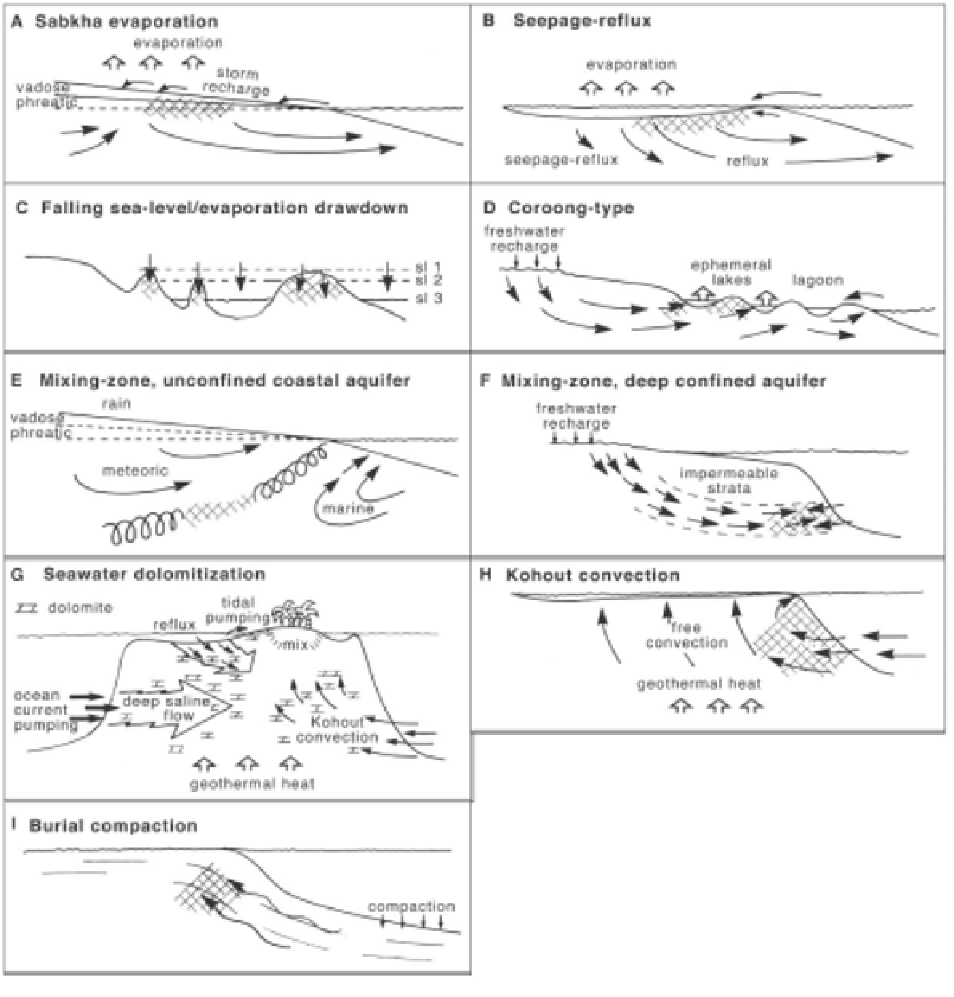Geology Reference
In-Depth Information
1994). The model is frequently used to explain the do-
lomitization of cyclic carbonate-evaporite successions.
D:
The
Coroong model
is based on ephemeral alkaline
lakes in South Australia lying behind a modern beach
barrier which are fed by the sea and continental ground-
water discharging from an unconfined seaward-flow-
ing aquifer. The model stresses evaporation of recharg-
ing Mg
2+
-rich groundwaters. Fine-grained dolomite
formed at different times in the annual lake cycle of
flooding and desiccation.
Fig. 7.23.
Dolomitization models:
The two basic questions
in all the models developed for the formation of dolomite
rocks are the source of the Mg
2+
ions and the process in-
volved in pumping dolomitizing fluids through the carbon-
ate sediment. Currently, the interpretation of ancient dolo-
mitization processes considers five models: evaporative (
A
,
C
) and seepage-reflux (
B
), mixing zone (
D, E
), burial (
H
)
and seawater (
I
). A survey of papers published during the
last twenty years shows that the sabkha evaporation model,
various modifications of the mixing zone model, and the
burial model are favored over other concepts, but seawater
dolomitization models are increasingly being used. But hy-
drothermal dolomitization and dolomitization associated with
organically- and microbially-derived processes
(
Gornay et
al. 1999; Wacey and Wright 2001; Burns et al. 1988, Bernas-
coni 1994; Mazzullo 2000) are highly disputed models.
Slightly modified after Tucker (1985).
References: Botz and Von der Borch 1984; Muir et al. 1980;
Rosen et al. 1989; Simms 1984; Von der Borch 1976; Von
der Borch and Lock 1979; Warren 1988; Wright 1999.
7.8.2.2 Mixing-Water and Seawater Models
Dolomites not associated with evaporites are often
explained by mixing zone models or by seawater dolo-
mitization models (Fig. 7.23):

